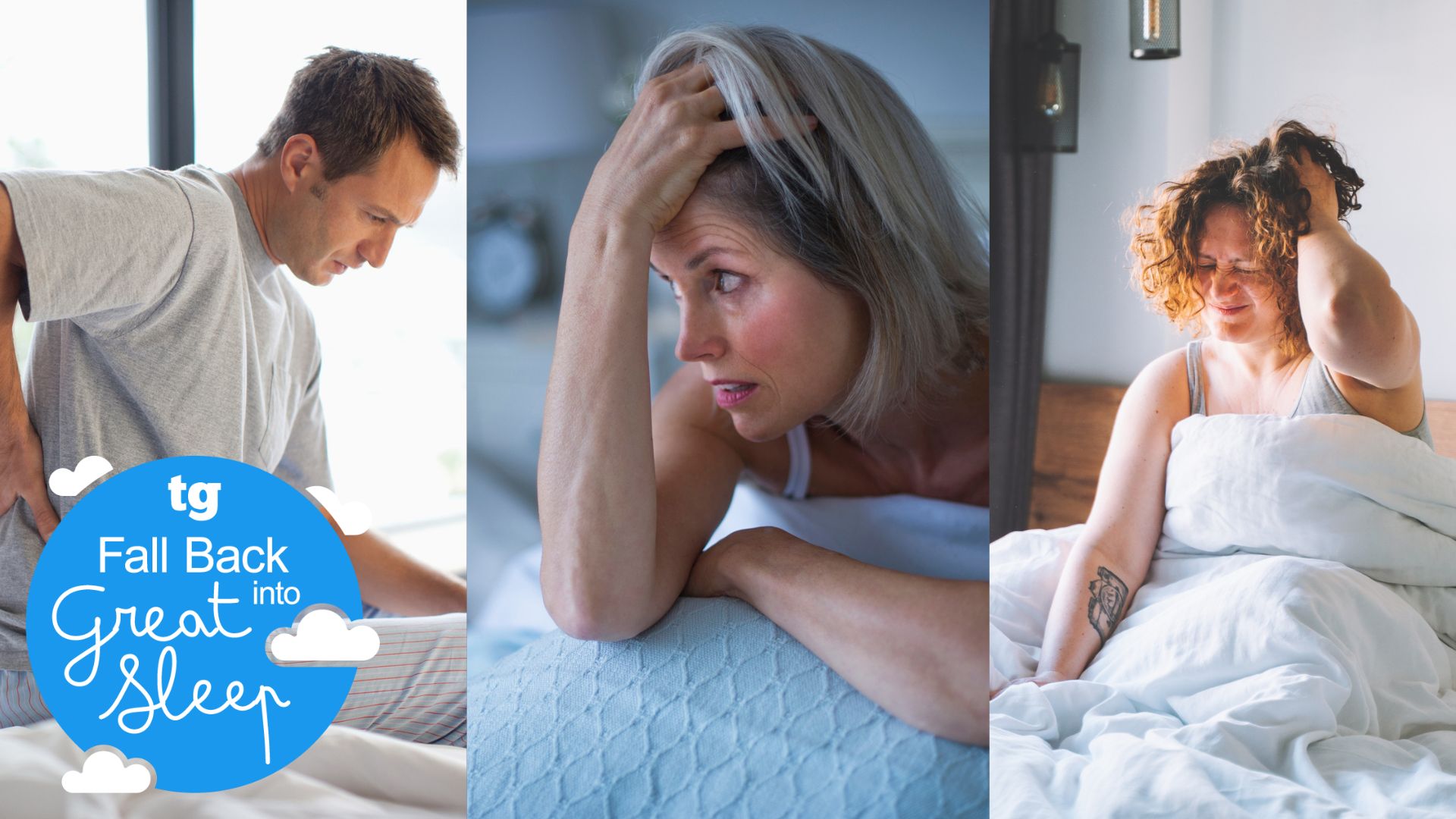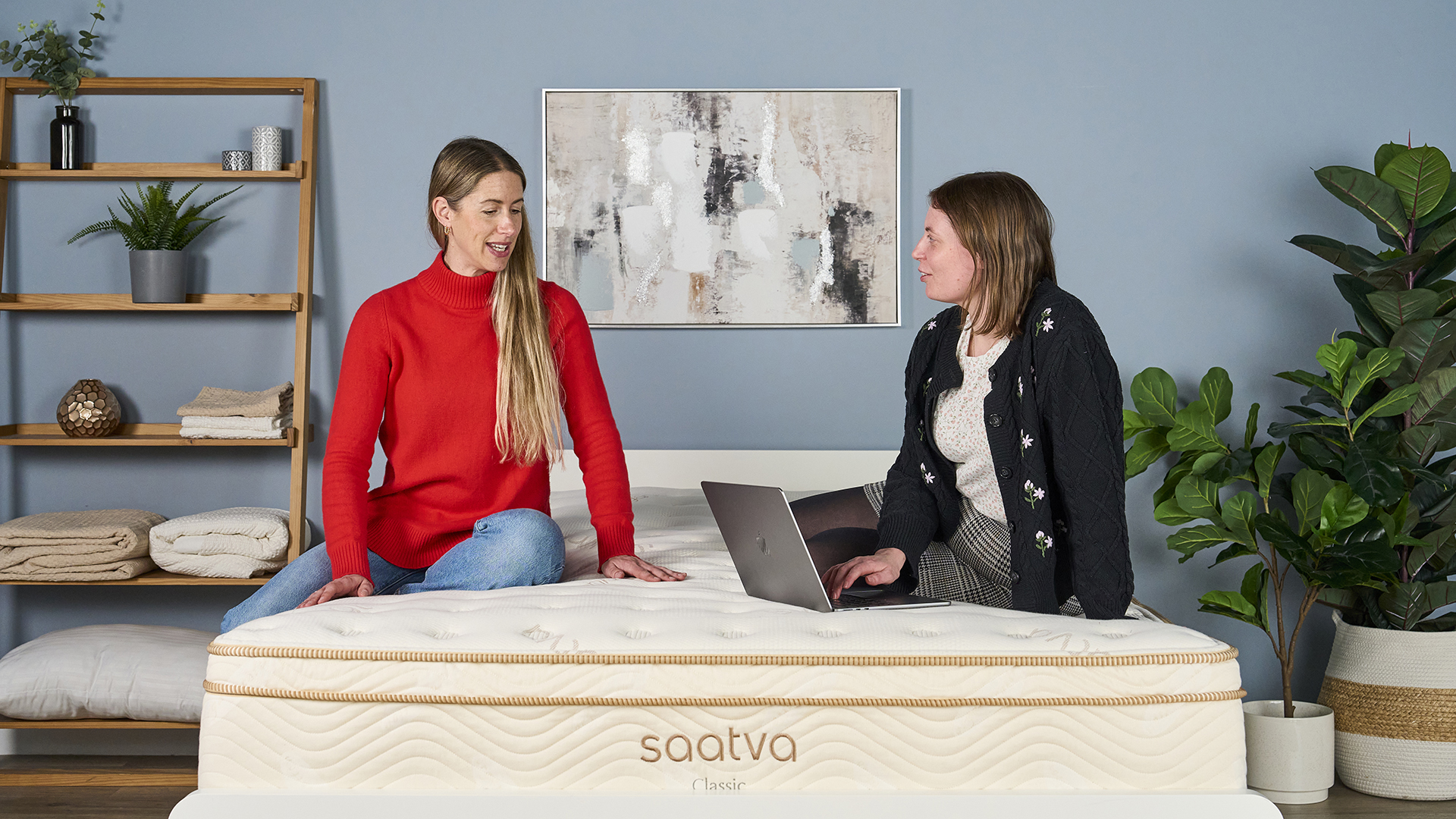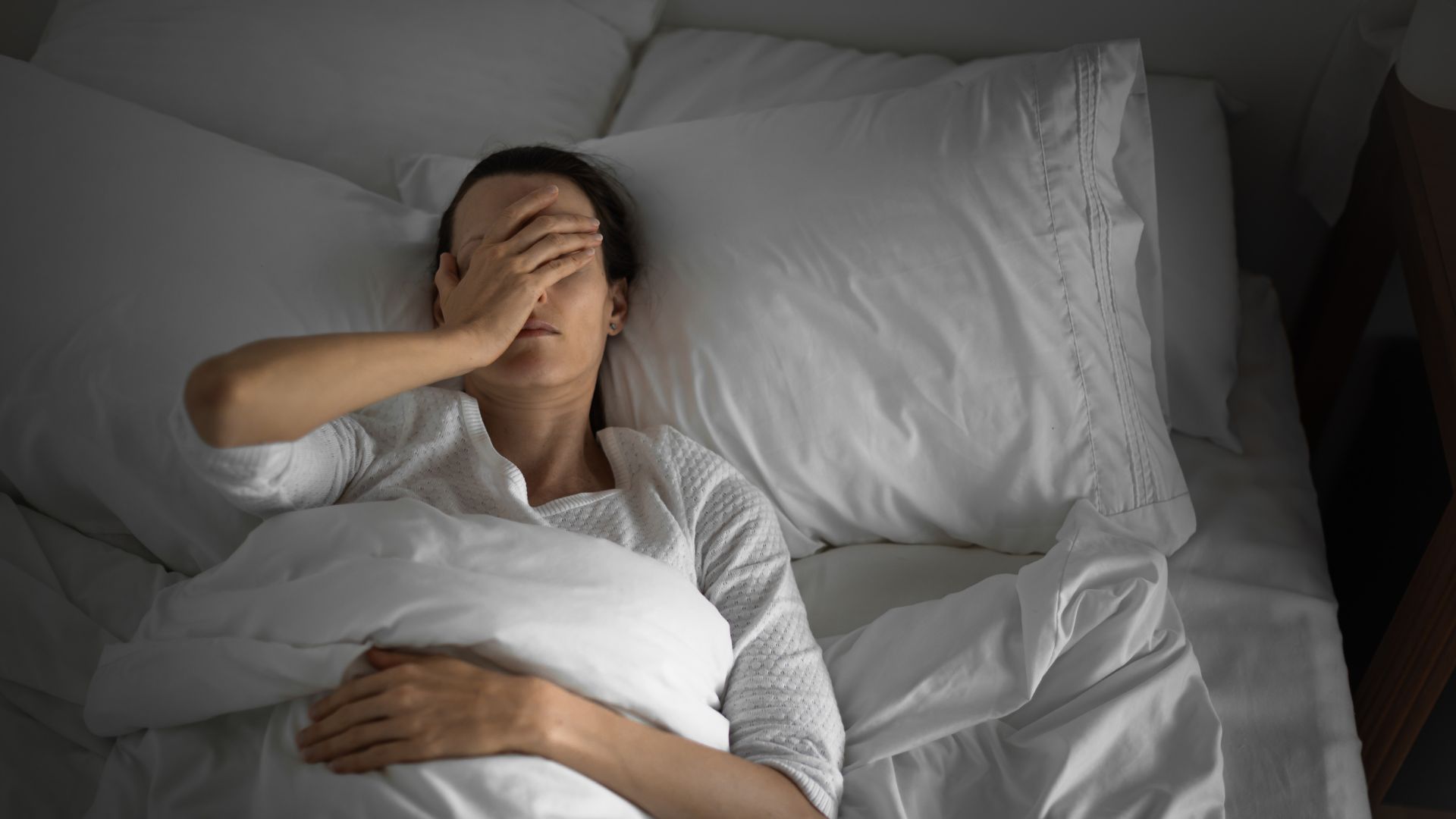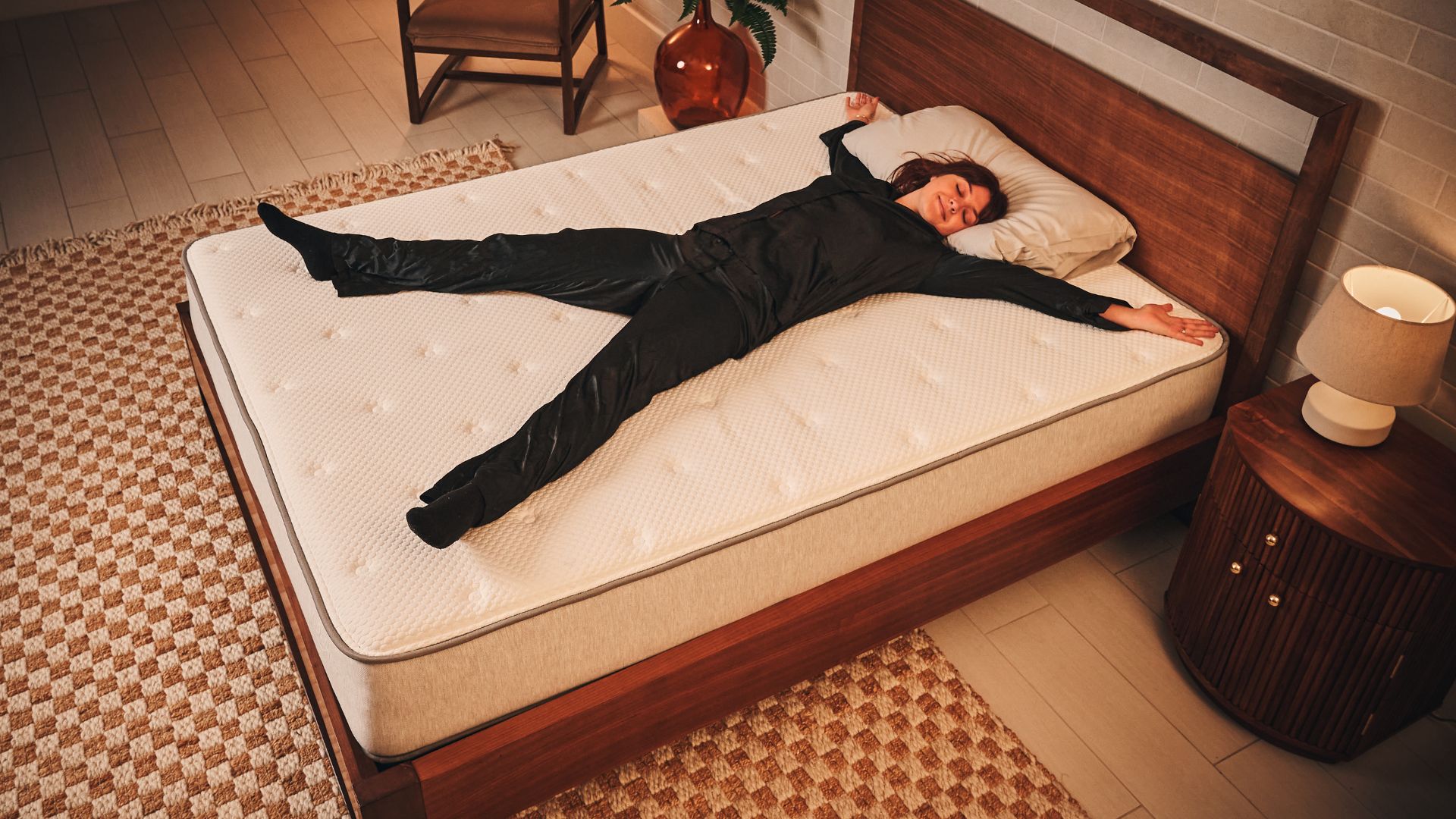My mattress was secretly sabotaging my sleep — 4 signs you need to replace your bed
Plus my top tips for choosing the right mattress this hibernation season


Check out our guide to this year's best mattress and transform your bedroom in time for hibernation season.
The season is changing again, and with the clocks turning back, the evenings getting darker and the weather colder, our sleep can suffer. But before you start trying viral hacks and secret methods to fall asleep fast, you need to nail the basics — and that means looking at your mattress.
Back before I knew much about mattresses, I’d invested in a good quality option that I thought would stand the test of time.
And, in fairness, it did last for around a decade with no issues. The problems started when I tried to keep sleeping on the mattress even when, in hindsight, it was no longer providing me with a decent night’s sleep.
And I’m not alone – most people won’t realise what an old mattress could be doing to their sleep, let alone their health. Research suggests that if you have existing back pain or sleep problems, for example, the association between sleep quality and mattress quality is significant.
As part of our Fall Back into Great Sleep campaign, I'm sharing my experience. if you’re not sure whether your mattress might be causing you problems, read on. And, if you decide you do need to bite the bullet and invest in a new bed, we’ve found the best mattresses to help you sleep comfortably through the night.
The 4 signs I needed to replace my mattress
When my problems started, I was sleeping on an innerspring mattress from a well-regarded store in the UK.
When I purchased it and for many years afterwards it was the comfiest mattress I’d ever slept on. So much so that I ignored all of these signs that it was time to replace it…
Get instant access to breaking news, the hottest reviews, great deals and helpful tips.
1. I couldn’t get comfortable in bed
Neither my husband or I weigh much and, being an innerspring mattress, we’d rotated and flipped it more times than we’d had hot dinners over the years.
I began to dread getting into bed
The problem, after a decade of sleeping on it, was that no matter how we turned it round there were still dips and uneven surfaces all over the bed.
This meant that I, as a very lightweight sleeper at the time, couldn’t get comfortable no matter how I positioned myself. I began to dread getting into bed, which had the knock-on effect of making it harder to sleep, leading to some obvious signs of sleep deprivation.

2. I slept better away from home
Sadly, we weren’t galivanting around the world on a weekly basis but, on the odd occasion we did stay in a hotel, I slept like a log on the hotel beds. I also woke up feeling refreshed and pain free (more on that later statement in a minute).
Of course, at the time I just put this down to the superior mattresses that many hotels use and the fact that they’re replaced the minute any serious sagging occurs. But going home to my existing mattress was always a wrench.
3. My husband struggled with overheating
My husband is a hot sleeper but when our mattress was still in good condition, the layer of springs kept air moving and him cool at night. But he began to struggle with overheating, waking up in the night feeling particularly warm and clammy.
With the springs and layers of padding becoming compressed over time, it was obvious in hindsight that heat was becoming trapped in the mattress.
Of course, the best cooling mattresses use specialist materials to keep sleepers cool but it’s also worth noting that a good quality hybrid or memory foam mattress should be designed with at least some temperature controlling features.

4. I was waking up in pain
As someone who’s suffered with lower back pain for years, I didn’t immediately make the connection between my mattress and the back pain that had progressed up my entire back and into my neck.
Daft as it sounds, I initially just thought that I was having a flare up of existing issues. Of course, once I’d gone away and slept on a decent hotel mattress, things started to add up.
And it was this last factor that really made me decide to throw in the towel on our existing mattress – I just couldn’t take the pain levels anymore.

What can an old mattress do to your back?
I spoke with osteopath Taeona Hutton, owner of the Chesham Osteopathic Clinic, to find out why an old mattress can cause pain.
An old mattress offers zero support
“An old mattress offers zero support, which leads to your joints being restricted and mobility being affected as you’ll be so stiff and achy,” explains Taeona.
“This lack of support for your muscles and joints makes it harder for the spine to be correctly supported and kept aligned. And it doesn’t help that most people don’t sleep in the correct position (side sleeping),” Taeona says.
“An old mattress will exacerbate the lack of support that other sleeping positions can cause. All of this means you’ll wake up with pain in the morning, although this should gradually wear off as you move around during the day,” she adds.
How my sleep changed after investing in a new bed
Once I realised a new mattress was inevitable, I spent a lot of time looking at the best mattresses for back pain to ensure I’d get the correct support.
And once I’d settled into my new mattress, which did take a good few weeks, I began to wake up pain free each day.
But I also found it far easier to get to sleep in the first place, as well as easier to stay asleep during the night as I wasn’t tossing and turning to get comfortable.
My 7 top tips for choosing the right mattress for you
Different types of mattresses have different lifespans but in general:
Most quality mattress will last 10 years
Latex mattresses can last 15-20 years
Memory foam and hybrid mattresses should last 10 years
Cheaper innerspring mattresses could need replacing every 5-7 years
Once you’ve realised that trying to cling on to your old mattress is an utterly idiotic idea, how do you go about choosing the right mattress? Here are my top tips:
1. Think about how you sleep: In a perfect world we’d all sleep on our sides but, as we don’t, think about how you sleep. I’m a combination sleeper so a medium firm mattress works for me as it allows me to change position easily at night. Side sleepers should look for a softer mattress, whereas back and stomach sleepers often need something a little firmer.
2. Think about your body type: If you’re of a lighter weight, like I am, you won’t sink as far into a mattress. So you’ll need a little more cushioning to stop painful pressure points. But as body weight increases, you’ll need more support to keep you comfy overnight. Look for softer comfort layers near the top of the mattress made from materials like wool, memory foam or latex.
3. Think about your own personal preferences: Even though I’m lightweight, I can’t stand really soft mattresses or slow-moving memory foam that engulfs me. So I always go for a firmer mattress than my body type might suggest. Personal preferences make a huge difference and there’s nothing wrong with that.

4. Think about lumbar support: Even if you don’t suffer with any back pain, I cannot stress enough the importance of decent lumbar support on a mattress. If your spine and lower back aren’t properly supported when you sleep, you’re going to develop back pain and trust me, you don’t want that particular little joy in your life.
5. Think about when to buy: Decent mattresses cost money, so I’d really advise waiting for a good sale to invest in many new beds. However, there are some brands, such as DreamCloud and Nectar, that have permanent discounts so you can pick them up for great value at any point in the year.
6. Think about trial periods: If you’re buying a new mattress and you find a cheap one that looks right up your street but doesn’t have a trial period, I’d advise running in the opposite direction. It can take around 30 days for a new mattress to ‘bed in’ (excuse the terrible pun) so I’d look for a mattress with a trial period of at least 100 days so you can really be sure it’s the right choice for you.
7. Think about research: And lastly, as a sleep writer and mattress tester, I’d be somewhat remiss if I didn’t advise you to do your research before buying. We have guides to every type of mattress and the team has tested hundreds of different beds, so you can be pretty sure we’ll have advice and answers to any questions you might have.

Jo Plumridge is an experienced mattress reviewer with several years' experience covering all things mattresses and sleep, and who tests memory foam, hybrid and organic mattresses. What Jo doesn't know about a boxed mattress isn't worth knowing, so naturally we tasked her with producing a series of features for Tom's Guide looking at all aspects of mattresses, from how to pick between latex and memory foam (it's a tricky one), to the seven mistakes people make when buying a mattress for the first time. When testing the DreamCloud Luxury Hybrid for Tom's Guide, Jo said: "I loved the back support and pressure relief it offered. Plus, it looks far more expensive than it is." When she isn’t writing about sleep, Jo also writes extensively on interior design, home products and photography.
You must confirm your public display name before commenting
Please logout and then login again, you will then be prompted to enter your display name.
